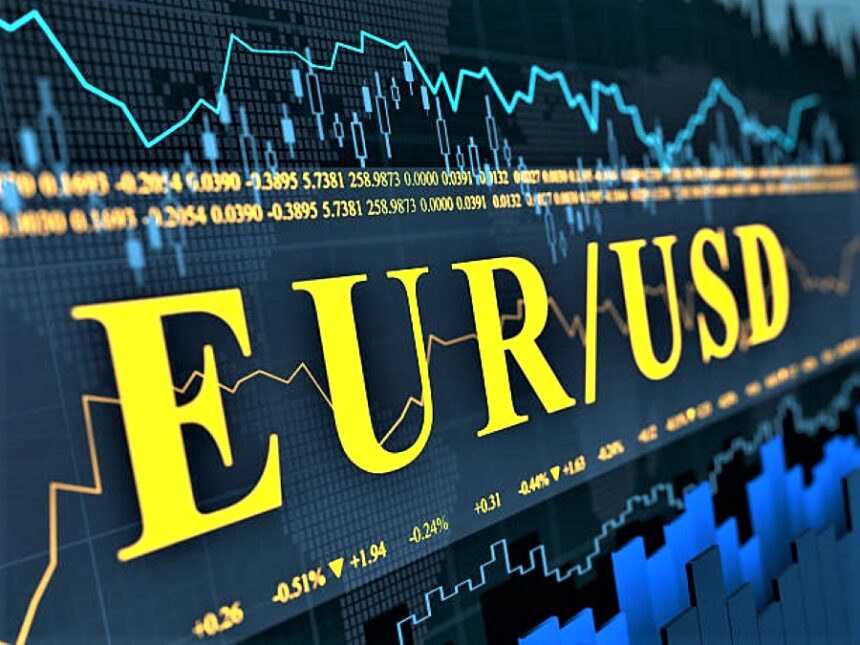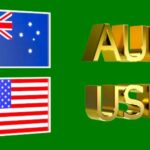EURUSD Sinks Below 1.1100 as US-China Trade Truce Sparks Dollar Rally.
EURUSD pair plummeted below the psychologically crucial 1.1100 mark during early European trading hours on Monday, weighed down by a surging US Dollar. The sudden strength in the Greenback comes after a surprise announcement from the United States and China—two of the world’s largest economies—that they will reduce tariffs by 115% for a 90-day period, significantly easing ongoing trade tensions.
The joint statement, released ahead of trade negotiations in Geneva, revealed that Washington would lower its import duties on Chinese goods from 25% to 10%, while Beijing would reduce its tariffs on American imports from 45% to 30%. Although a 20% fentanyl-related tariff still lingers on Chinese goods, the US Trade Representative Jamieson Greer assured that negotiations were progressing positively. “The two sides having constructive conversations on the issue of fentanyl,” Greer stated.
US Dollar Index Rises on Optimism Over De-escalation
Markets quickly reacted to this truce, with the US Dollar Index (DXY)—which tracks the USD’s performance against a basket of six major currencies—rallying to nearly 101.60. This level represents a significant recovery from last week’s lows, driven primarily by renewed optimism that reduced tariffs could temper inflationary pressures in the US.
The outlook for inflation has been front and center for investors and policymakers alike. The recently averted tariff escalation seen as a key factor that could ease elevate consumer price expectations. With fewer tariffs, costs for both businesses and consumers are expected to decline, reducing inflation risks and possibly influencing the Federal Reserve’s next steps on monetary policy.
Trump’s Tariff Commentary Adds to Market Chatter
Adding a political dimension to the market buzz, former US President Donald Trump stirred controversy by suggesting on his Truth Social platform that tariffs on Chinese goods could be lowered to 80%, contingent on the stance of hedge fund manager Scott Bessent. “80% Tariff on China seems right! It’s up to Scott Bessent,” Trump wrote, cryptically referencing his informal economic advisor.
While Trump’s statement holds no official weight in current trade negotiations, it added a layer of uncertainty and speculation, especially given his prior history of erratic tariff policy. Nonetheless, markets chose to focus more on the formal US-China joint statement, which emphasized cooperation and a return to dialogue.
Fed Policy Outlook in Focus as CPI Looms
Looking ahead, the next big catalyst for the US Dollar—and, by extension, EURUSD—is the Federal Reserve’s evolving policy stance in light of the trade truce. With lower tariffs potentially easing inflation, Fed officials may recalibrate their outlook on interest rates.
Last week, Fed Chair Jerome Powell acknowledged in a press conference that the announced tariffs were “significantly bigger than expected.” He warned that if such increases were sustained, they could lead to “higher inflation and lower employment.” However, with the current reduction in tariffs, those fears may be dialed back, allowing the Fed to maintain or even relax its policy stance in the upcoming meetings.
Market attention is now shifting to Tuesday’s release of the US Consumer Price Index (CPI) for April. Forecasts suggest that headline inflation rose 2.4% year-on-year. A softer-than-expected print could reinforce the Fed’s dovish tilt and provide further support to the US Dollar.
EURUSD Weakens Amid Mixed ECB Signals
On the European side, the common currency is facing its own set of challenges. The Euro has come under pressure as investors digest conflicting signals from European Central Bank (ECB) officials regarding the future path of monetary policy.
While several ECB members have hinted at the need for further interest rate cuts, citing the fragile global trade environment and persistent disinflationary trends in the Eurozone, not all are on board. ECB Executive Board member Isabel Schnabel struck a more cautious tone during a speech at Stanford University last Friday.
Schnabel argued that the current policy stance is appropriate, warning of potential inflationary risks in the medium term. “The appropriate course of action is to keep rates close to where they are today – that is, firmly in neutral territory,” she stated. Schnabel also emphasized that cutting rates too quickly could backfire, especially if global economic uncertainties materialize into more persistent inflation.
Trade Dynamics and Eurozone Risks Remain Key Themes
The Euro also caught in the crosswinds of global trade realignments. Many analysts believe that the temporary US-China trade truce could have unintended consequences for the Eurozone, especially if China redirects its exports to European markets. This could introduce deflationary pressures in the bloc and challenge the ECB’s efforts to achieve its inflation target.
Moreover, the Eurozone’s economic outlook remains clouded by stagnant growth, soft consumer demand, and structural challenges in key economies like Germany and France. The bloc’s reliance on exports makes it vulnerable to shifts in global trade patterns, particularly amid rising protectionism and supply chain decoupling between major economies.
Technical Analysis: EURUSD Faces Key Support Levels
Technically, the EURUSD pair has breached key support near 1.1100 and could face further downside if bearish momentum continues. The next major support lies around 1.1050, followed by 1.1000—a critical psychological barrier. A break below these levels could open the door for a move toward 1.0950 in the short term.
On the upside, immediate resistance seen at 1.1135, with stronger resistance near 1.1180. However, sustained recovery may be difficult unless the Euro receives a boost from either better-than-expected economic data or a dovish turn from the Fed.
Market Outlook: Volatility Ahead with CPI and Fed Speeches
With the US inflation data due Tuesday and multiple Fed officials scheduled to speak this week, EURUSD could experience heightened volatility. Markets will be closely watching for any indication that the Fed might shift its rate expectations in response to easing inflationary pressures.
If CPI comes in lower than expected and Fed speakers adopt a more dovish tone, the US Dollar could stabilize or even pull back slightly, giving the Euro some room to recover. On the other hand, any signs of stickier inflation could reignite bets on future Fed tightening, keeping EURUSD under pressure.
[faq-schema id=”39555″]









